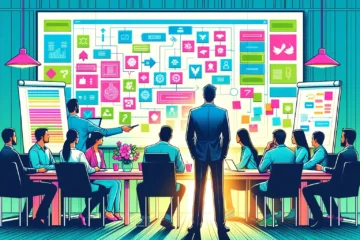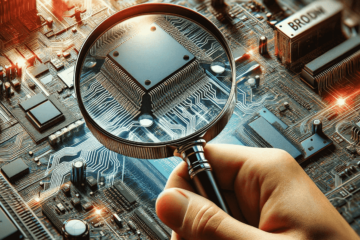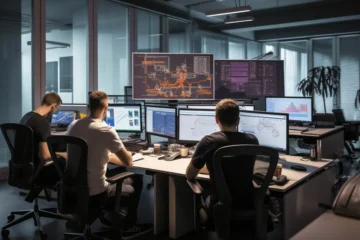Prop tech is a group of digital technologies and economic trends that gradually transforms the current real estate market. In particular, end-to-end automation, as well as advanced data processing and object demonstration capabilities, give the real estate industry a new form, allowing it to cover larger target audience scales. Let’s discuss the major prospects of such transformation.
Challenges of the Real Estate Property Market
Which issues real estate experts must face most often?
- Decent service for a growing TA. The significant growth of clients is both a gift and a curse for any company working in this niche. On one hand, it’s a definite mark of success, but on the other, there appears a question of providing service of the same, decent level of quality. The thing is, the usual size and capabilities of the existing staff can become insufficient and one can start losing clients because of that. Moreover, the competition strives restlessly, so one must be ready to work in harsh market conditions without slowing the service down.
- High cost of company scaling. As an option, the previous issue can be solved by expanding the staff of employees. But what does this decision bring in this aspect? First of all, a necessity to organize new working places, rent more office space and pay more regular taxes appears. As a result, one risks to witness a real gash in the budget (according to practice, the speed of new working force paying off in terms of business profits is quite relative: sales experts are, usually, the faster to compensate your expenses while the managing stuff won’t be paying off for some time initially).
- Difficulties with demonstrating objects on the stage of planning. When an object isn’t really ready yet to be exploited, it’s difficult to attract potential investors and buyers. Regular 2D models, perhaps, work, however, advanced software based on the augmented reality tech concept will be much more efficient in this aspect.
- High expenses power delivery systems demand. As you may know, right now, many countries direct lots of effort towards fighting global warming. Rational distribution of energetic resources, particularly, when it comes to domestic heating, plays quite a big role here. If a building company doesn’t timely employ energy-saving tech while designing an object, it will automatically decrease its competitive force on the market.
- Difficulties with building design. The preciseness of design is the key to avoiding additional, unexpected expenses for building companies. Nowadays, it becomes practically impossible to do so in the 2D format, using out-of-date techniques that most great architects used to practice years ago.
- Financial accounting difficulties. When there are lots of clients at hand, financial accounting and monitoring can become a real challenge for your accounting department. Even the smallest error made during composing reports can affect a company in the most negative way. It’s important to find a fitting tool or method of organizing financial processes efficiently, which would minimize human factor-caused mistakes.
- Data synchronization challenges. If a real estate establishment has several departments, synchronization of data between them may become a real issue. It is as difficult to synch data between several applications as well. In the end, there are either drastic errors or delayed data update or, in the worst case scenario, data leaks, which result in the significant loss of money and clients.

Market Trends and Demands
On top of that, there start appearing clients that are well aware of the major smart home possibilities and are interested in purchasing properties with the high level of automation implied during the basic construction. For now, many countries lack highly-qualified experts able to integrate the IoT with numerous protocols and devices available on the market. During the following years, building companies are sure to focus the search for such experts.
In the nearest future, every room of high-end properties is expected to have its own microclimate that fully managed by smart devices based on the IoT proptech technology. In Western Europe and the USA, companies are already integrating such systems, allowing the niche to acquire new, more advanced solutions every year.
Technological Trends of the Proptech
- 3D modeling. A special method of measuring building based on the advanced 3D modeling property technology allows getting a high-precision 3D cloud of engineering points, architects and designers can efficiently use for project planning and building further on. It helps to achieve this high precision in building while avoiding additional costs and time (which won’t be wasted on numerous corrections during building). Interior designers can also employ this method in their work, as room dimensions are also best processed in 3D.
- Smart home systems. A smart home is not only a trendy technological ‘innovation’ based on the Internet of Things concept. It is a solution to provide high rates of energy efficiency in your property. Thus, there are proptech companies that integrate thermostat management systems which allow reducing the level of heating in the domestic space (even in separate rooms) during warm days. There are also window climate control systems that provide comfortable temperature and humidity conditions in spaces based on smart sensors (these sensors monitor room temperature, humidity and CO2 levels). With the help of such data and remote control capacities, windows, highlights, sunblinds, and shutters can open and close automatically, providing an optimal microclimate for certain rooms. In such a way, building and developing healthy properties with the help of innovational solutions based on the IoT proptech technology, companies can boost brand awareness and competitive abilities.
- Augmented and virtual reality apps. A proptech technology approach that involves augmented/virtual reality solutions is, pretty much, a current mainstream in the niche. That’s why many companies out there selling real estate right now strive to deliver every other property as descriptively as possible. In particular, the most creative ones go to developers and build authentic AR- or VR-powered software. As a result, one can demonstrate properties in their full glory even while they’re on the planning or design stage.
- CRM solutions. For utterly efficient interaction between company employees and clients, CRM tools are involved in experts’ workflows. These are, basically, solutions that can come in handy in any niche related to commerce. It isn’t new and can vary only in terms of the overall technology and integration capacities. In particular, cloud CRMs are of especially high value on the current market – they are easy to scale, conveniently grant access to the in-house data and provide its immediate updates.
- Blockchain. As we have already mentioned, blockchain as a property technology can become a pioneering tech concept powering the new deal-making scheme. A blockchain-protected approach to the interaction between parties can provide thorough transparency and reliability of all financial operations involved.
Opportunities to Modernize Real Estate Market
The main opportunity to modernize the current market of real estate on the level of your company is to start timely cooperating with software developers who would work with at least one or two technologies described above.
This will help you position your business as progressive, meet the highest client expectations, and even significantly lower the in-house workflow processes’ implementation expenses.
In the nearest future, the field of IT promises to radically reshape the real estate industry as it is. So if you wish to stay competitive during the next 3-5 years, you should implement at least one trendy property technology we described in the article. Go to Artelogic if you need an authentic software solution created for your business fast, at a reasonable price, and with a high-quality end product.

New Trends in Energy Trading and Risk Management Software











